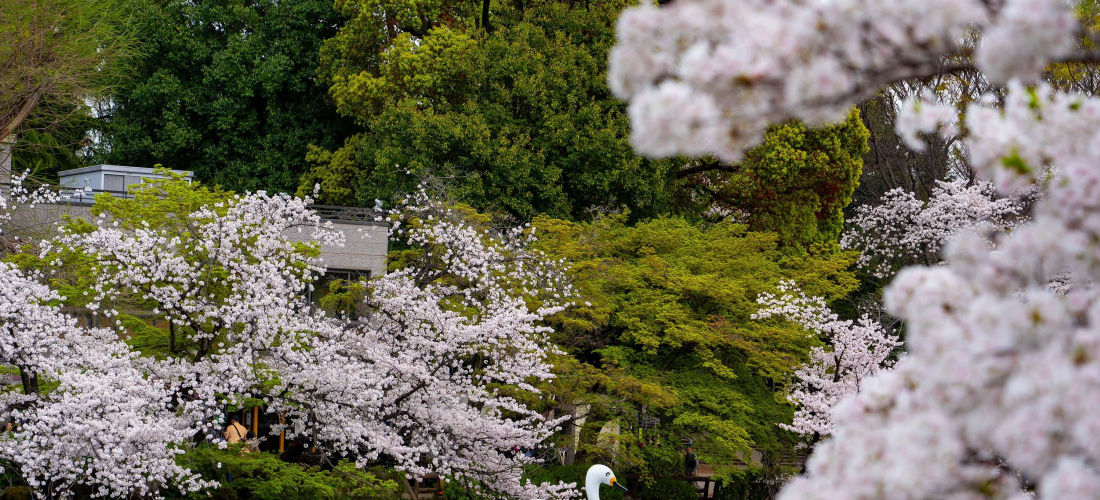
CONTENTS
Want to enjoy the Tokyo cherry blossom season without the crowds? Try these local recommendations for some of Tokyo’s best-kept secrets, and enjoy Japan’s cherry blossoms in these unique hanami spots.
Enjoy Tokyo’s Cherry Blossoms Like a Local
Every spring, when cherry blossom season finally rolls around, Tokyo becomes a sea of beautiful flowers and busy sightseers, with travelers arriving in waves to see the city's many parks and gardens. It's a fun time to be in Tokyo, but it's also a little overwhelming, and sometimes the sheer masses of people can make it hard to enjoy the "sakura" (桜/cherry blossoms) and take part in Japan's "hanami" (花見/cherry blossom viewing) traditions in peace. Fortunately, not every cherry blossom spot in Tokyo is overtaken by crowds each spring! Venture out away from the handful of cherry blossom hubs around the city, let yourself stray a little further into Tokyo's more residential neighborhoods, and you'll find a whole unexplored world of cherry blossom spots throughout the city.
So this year, to bring you the best of Tokyo cherry blossom viewing without all the hustle and bustle, all of us on the Japankuru team are using our local knowledge to introduce you to some of our favorite hidden treasures. These spots are deep cuts from neighborhoods all over the city, but we've put together three somewhat self-contained tours (plus one bonus spot) for easy enjoyment. After living in Tokyo for years, we know where the crowds go, and we've got some tips for enjoying the season in our own little neighborhoods. Make the most of the cherry blossoms in Tokyo this year with our ten top sakura spots!
Hidden Deep in West Tokyo
Tokyo is thought of as one city, but this enormous metropolis is made up of 23 wards and multiple smaller cities contained within the Tokyo label, and that includes the city of Musashino. Easy accessible from central Tokyo in less than half an hour, without changing trains, this little city to the west is just far enough from Tokyo's biggest tourist attractions that it doesn't get a lot of attention. But when it comes to living in the Tokyo metropolitan area, it's often at the top of lists, thanks to the many local conveniences, relaxed atmosphere, and abundant parks and gardens. Perhaps it should come as no surprise that in this funny Japanese city within a city, there are quite a few hidden cherry blossom spots to find… if you know where to look!
1  Inokashira Park
Inokashira Park
If we could only choose one cherry blossom spot to represent the entirety of Musashino, then our first choice would be Inokashira Park, which is often ranked in the top 100 cherry blossom viewing spots in all of Japan! This sprawling park contains a range of attractions including a museum, a zoo, a shrine, and plenty more, but the famous cherry blossoms are mainly spread along the shores of a picturesque pond. During cherry blossom season, visitors sit by the water under the drifting cherry blossom petals, or rent out swan boats to see the flowers from a whole new angle. Of course there's space to spread out blankets on the nearby lawn, as well!
For travelers looking to pack as much as possible into each day, there's more to see at Inokashira Park! Take some time to look for the elegant Benzaiten Shrine, and enjoy the quiet, mysterious aura. Visit the zoo to Or visit the zoo to see some of Japan's rarer animals, like the cute and fluffy Japanese marten, or the antelope-like Japanese serow. Or plan a visit to the famous Ghibli Museum, which is tucked away within the greenery of the park! (Just make sure you get your Ghibli tickets in advance, because they sell out quick!)
Inokashira Park (井の頭公園)
1-18-31 Gotenyama, Musashino, Tokyo
Swan Boats: 800 yen/30 min
Official Website (en)
2  Musashino Central Park
Musashino Central Park
Located about 13 minutes by bus from the trendy commercial hub of Kichijoji Station, Musashino Central Park (also known as Musashino Chuo Park/武蔵野中央公園) feels like a local park in all the best ways, and it's perfect for enjoying cherry blossom season. If you want to really get into the Japanese tradition of "hanami," this park's wide open lawn is ripe for picnicking, and the huge cherry blossom trees provide plenty of shade – not to mention lots of flowers to enjoy! Families looking for a good cherry blossom viewing spot will also be happy to see Musashino Central Park's playground facilities, which makes it a fun place to relax for visitors young and old.
Musashino Central Park (武蔵野中央公園)
2-4-22 Yahatacho, Musashino, Tokyo
Official Website (jp)
3  Musashino City Hall
Musashino City Hall
Stretching between Musashino City Hall and the NTT R&D Center, this last Musashino spot might not seem like an obvious choice for cherry blossom viewing, but in recent years it's become talk of the town. Locals know that city hall is actually a must-see spot every spring! Long rows of cherry blossom trees are planted on either side of the road, and when the sun shines just right, with the long branches swaying in the wind, this picturesque vision looks like a scene straight from an anime opening sequence.
Located just a few minutes on foot from Musashino Central Park, the road between Musashino City Hall and the NTT R&D Center is an obvious choice for cherry blossom lovers interested in checking out what Musashino has to offer, and many visitors like to visit after spending some time at Inokashira Park. Of course, even though the spot has found a little bit of local popularity, it's still far from well-known – join the people of Musashino to enjoy the peaceful cherry blossom scenery!
Musashino City Hall (武蔵野市役所)
2-2-28 Midoricho, Musashino, Tokyo
NTT Musashino R&D Center (NTT武蔵野研究開発センタ)
3-9-11 Midoricho, Musashino, Tokyo
Along the Toden-Arakawa Tram Line
There's a certain charm to retro Tokyo, and many of the preserved remnants of Japan's iconic Showa era (1926-1989) can still be found in the parts of Tokyo traditionally called Shitamachi – areas of reclaimed marshland that traditionally belonged to the lower classes. That Shitamachi vibe can be felt throughout a swath of central-eastern Tokyo, and it might be strongest along parts of the Toden-Arakawa Line, which takes pride of place as Tokyo's only remaining street car line! Once a part of a huge network that reached across Tokyo, the Toden-Arakawa Tram Line is the sole survivor, but this unique tram is also called the "Tokyo Sakura Tram" thanks to the many beautiful cherry blossom trees found along its route. If you find yourself in Tokyo during cherry blossom season, a route along the tram offers a little retro fun and a lot of beautiful flowers!
4  Asukayama Park
Asukayama Park
Asukayama Park sits on a small hill located between Ojiekimae and Asukayama Stations (on the Toden-Arakawa tram), but it's thought to have been planned and developed by Tokugawa Yoshimune long before the tram was ever built, back in the Edo period (1603-1868). The park was originally landscaped as a place for the citizens of Edo to enjoy the cherry blossoms, and modern Tokyoites are still in love with it, thanks to the ample grassy lawns for picnics, and somewhere around 650 Somei Yoshino cherry blossom trees (ソメイヨシノ, the most common variety in Tokyo).
Thanks to Asukayama Park's long history, visitors can also admire old buildings still scattered around the grounds, like the former residence of the Shibusawa family, which has been designated an important cultural property. And for younger visitors (or those who are still young at heart), the playground has plenty of cute equipment, featuring polar bears and octopuses!
Asukayama Park isn't nearly as popular as Tokyo's most famous cherry blossom spots, which makes it a good alternative, but it's still a local favorite. If you want to avoid the crowds, try going earlier in the morning and avoiding weekends or holidays. You might even have it all to yourself! If you're lucky.
Asukayama Park (飛鳥山公園)
1-1-3 Oji, Kita City, Tokyo
Official Website (jp)
5  Homyoji Temple
Homyoji Temple
Homyoji Temple was established under its current name on this spot some 700 years ago, but these days it can be found between the more recently constructed Toden-Arakawa stations of Zoshigaya and Kishimojinmae. The temple's broad influence is said to extend as far as the nearby Kishimojin Temple, which apparently sits within the grounds of Homyoji, although it has a separate reputation for beautiful ginkgo trees (and has lent its name to Kishimojinmae Station). Homyoji Temple owes its springtime popularity to the tall cherry blossom trees found on either side of the temple entrance way, which frame the temple gate in pretty pink petals.
As the temple is located in a residential area, it's generally very quiet, but if you visit during the weekend at peak cherry blossom season you might run into a crowd of fellow flower fanatics! It's only polite to let worshippers through and respect other picture-takers, and we think it's also important to keep in mind that there are people trying to live their lives just outside the temple walls, too!
Homyoji Temple (威光山法明寺)
3-18-18 Minamiikebukuro, Toshima City, Tokyo
Official Website (jp)
6  Kanda River, Omokage Bridge
Kanda River, Omokage Bridge
Walk along the Kanda River between Gakushuinshita and Omokagebashi Stations, and you'll find a series of beautiful cherry blossom spots, the most popular of which is the area around Omokage Bridge. In Japanese, the word omokage (面影) can be used to refer to a phantom, or a vestige of someone's memory, and there are a number of theories concerning the bridge's poetic name. Some say it has to do with Tokugawa Iemitsu, the third shogun of Japan, while other theories say it comes from the tragic story of a local woman who killed herself by jumping off the bridge. Others say that the name actually comes from the poetry of Waka specialist Ariwara no Narihira, who described the water's surface as being as clear as a mirror.
Look out along the flowing water from the bridge, and the cherry blossom trees stretch out over the river, creating a picturesque scene that looks a bit like Meguro River, except with fewer people around. In full bloom, the view will take your breath away! If you walk to the spot along the river starting from JR Takadanobaba Station instead, you'll be treated to more and more cherry blossoms as you go along, with the Omokage Bridge spot making an excellent finale. Of course, if you follow the Kanda River along its winding route, you'll find quite a few other bridges as well. Make sure to leave plenty of time to admire the flowers all along the water!
Omokage Bridge (面影橋)
2-1-16 Takada, Toshima City, Tokyo
▶︎ Check out more on the area around the Arakawa-Toden Tram Line here, in our article on Arakawa!
Off the Beaten Path in Ueno
During spring, the Ueno area becomes one of the most enticing parts of Tokyo, and crowds descend on Ueno Park to take in the broad boulevard of stately cherry blossom trees. Ueno Park during cherry blossom season is truly a sight to behold, but it's also busy and crowded, so if you're looking for a different kind of hanami experience, it's best to look elsewhere. Fortunately, Ueno and the surrounding neighborhoods also contain plenty of other places with beautiful cherry blossoms, and fun cherry blossom viewing experiences, and many of them also have a relaxingly quiet, peaceful atmosphere too. Ueno's cherry blossom season looks a little different to those in the know!
7  Ono-Terusaki Shrine
Ono-Terusaki Shrine
To see some of Tokyo's hidden treasures, we'll be going on a little Ueno cherry blossom tour that does not contain Ueno Park (although you can go there too if you want), and our first stop is a little shrine in a nearby neighborhood called Iriya. Located a little over ten minutes from Ueno Park on foot, Ono-Terusaki Shrine is small and inconspicuous, but like so many of Tokyo's minor shrines, it was actually established over 1,000 years ago, enshrining the scholar-poet-turned-god Ono Takamura (known for his tanka poetry). The cozy shrine grounds only have the space for one cherry blossom tree, which is an early-blooming variety with richly pigmented pink petals, but visitors still arrive at Ono-Terusaki each March to welcome spring to Tokyo! Many of the shrine's biggest fans come because the real live cherry blossoms aren't the only sakura attraction to be found there.
If you've spent much time exploring Japan's many shrines and temples, you've probably noticed the tradition of "goshuin" (御朱印) collection before, and you might even have a goshuincho book to collect the stamps yourself. As a unique part of shrine and temple identity, goshuin vary wildly from place to place, but Ono-Terusaki Shrine is particularly known for its ridiculously cute illustrated goshuin, often printed on special paper for added effect. Many shrines will offer seasonal goshuin for cherry blossom season, but Ono-Terusaki Shrine really takes it to the next level, with a series of colorful, dreamy illustrations offered one after another throughout the whole season, generally depicting the scholar-god Ono Takamura enjoying nature with his animal friends. If you collect goshuin, a cherry blossom season visit to this shrine is a must. (Their goshuincho books are great too, if you want to get started with goshuin collecting.)
Ono-Terusaki Shrine (小野照崎神社)
2-13-14 Shitaya, Taito City, Tokyo
Shrine Office Hours: 9:00 – 16:00
Official Website (jp)
8  Motomishima Shrine
Motomishima Shrine
This next spot is right next to Ueno Park on the map, and about ten minutes from Ono-Terusaki Shrine on foot, but the surrounding area has a totally unique vibe… which we might not necessarily recommend as a first choice if you're planning a family cherry blossom tour. Motomishima Shrine is next to Uguisudani Station, in an area notorious for its many, many, many love hotels, which means the neighborhood is perfectly safe but a little bit seedy. (It looks sketchy, but we promise it's not that bad!) But those who are willing to brave this den of depravity will find that Motomishima Shrine is a little oasis of peace and tranquility, built in the year 1281 by a military commander who saw the shrine in a dream. With its tall staircase surrounded by cherry blossoms, this spot will have you feeling like you're climbing a stairway to heaven.
One of the best things about Motomishima Shrine is that it not only has big cherry blossom trees that bloom lavishly throughout the grounds, but also that it has more than one variety, which means you can visit to see the flowers throughout the season. Towards the entrance and around the shrine gate, the brilliant pink "kan-zakura" (寒桜) cherry blossoms are known to bloom bright and early, getting a head start on many other Tokyo sakura spots and creating a pink canopy overhead as early as mid-March. Later in the spring, the Somei Yoshino cherry blossoms found further inside the shrine tend to bloom along with the flowers in Ueno Park, and these whiteish blooms create what feels like a tunnel of flowers around shrine steps. It's definitely worth finding your way through the winding Uguisudani backstreets, past all the love hotels, to admire the amazing views.
(If you started collecting goshuin, Motomishima Shrine offers some very elegant options!)
Motomishima Shrine (元三島神社)
1-7-11 Negishi, Taito City, Tokyo
Official Twitter
9  Yanaka Cemetery
Yanaka Cemetery
Yanaka Cemetery is a real cemetery and is thus filled with rows of gravestones, statues, and other monuments to the deceased, but this unique cherry blossom spot is far from morbid! With an atmosphere more like a park than a temple graveyard, Yanaka Cemetery is a space for both the dead and the living to find peace, with narrow paths carved out with uneven paving stones, roads lined with beds of Japanese irises, and of course plenty of cherry blossoms!
The central street running through the cemetery towards Tennoji Temple is this spot's most famous place to enjoy the flowers, and when the cherry blossoms are in full bloom, you'll see a slow but steady stream of visitors strolling between the lines of tall cherry blossom trees on each side, with branches reaching out to brush each other overhead. If you have the time to wander through the area, however, you'll find even more beautiful spots with fewer people around – keep an eye out for majestic trees stretching out over the graves and raining down showers of pale pink petals. Look closely and you might even find the headstones of a few famous Tokyoites, like Japan's very last shogun, Tokugawa Yoshinobu, and the novelist whose face graces the country's 5,000 yen bills, Ichiyo Higuchi!
Yanaka Cemetery (谷中霊園)
7-5-24 Yanaka, Taito City, Tokyo
Official Website (jp)
Ueno and its surroundings have a lot to offer, and while all of us on the Japankuru team love to join the raucous revelers who populate Ueno Park every year when the flowers bloom, that's clearly not the only option in the area! As another part of Tokyo's Shitamachi area, this little chunk of the city has its own history, and the centuries of residents have left us with so many places to enjoy the spring that these three don't even begin to cover it.
▶︎ Check out our whole Ueno area cherry blossom tour, with more sakura spots and local snacks too!
On the Sumida River
As one of Tokyo's main waterways, the Sumida River snakes its way through the city from north to south, taking a sharp turn to cut past popular sightseeing areas like Asakusa before flowing into Tokyo Bay. For many cherry blossom fanatics, a stroll along the river in Sumida Park (next to Asakusa) is a must, but we're here to tell you that there's an even better place to enjoy the cherry blossoms by the water.
10  Shioiri Park
Shioiri Park
Get away from the crowds and head north to Shioiri Park, a local city park with lush green lawns, paved paths, and cherry blossoms to enjoy all spring. Not only does Shioiri Park have more space than your average Tokyo park to sit down and stretch out, but it also has a wide variety of cherry blossoms, which bloom at slightly different times to give visitors a chance to enjoy the flowers throughout an extended cherry blossom season. Some years the season starts as early as the beginning of February and lasts through mid-April! Plus, as a municipal facility, the city takes extremely good care of Shiori Park, keeping it neat and clean for all to enjoy. Grab something to eat from a nearby convenience store, and it's the perfect place for a picnic – either in spring or in autumn when the leaves change colors!
The surrounding Senju neighborhood has been making overtures to tourists in recent years, emphasizing local culture and attempting to attract both locals and international travelers to this historically working-class Shitamachi area, but the area hasn't exploded onto the Tokyo travel scene quite yet. Visitors to the park have been on the increase in recent years, and the grounds are fortunately big enough to accommodate plenty of cherry blossom viewers, but it's still a real hidden gem in comparison to Tokyo's most popular spots. Stop by Shioiri Park to drink in the cherry blossoms on the banks of the Sumida River and enjoy the area to the fullest before the crowds arrive!
Shioiri Park (汐入公園)
8-13-1 Minamisenju, Arakawa City, Tokyo
Official Website (jp)
This Spring, Find Your Own Favorite Tokyo Cherry Blossom Spot!
Immense parks and tiny shrines, with cherry blossom trees hidden within busy Tokyo neighborhoods or tucked away in quiet residential neighborhoods – when it comes to beautiful cherry blossom spots, Tokyo has more options than you might imagine. And while some of the most famous destinations certainly have a certain majestic beauty, or a lively atmosphere, when you're looking for something a little more peaceful, you do have the option to get away from the crowds! This year, we've taken you with us on a tour of some of the Japankuru team's favorite Tokyo cherry blossom spots, to show off the city and show just how much potential Tokyo's lesser-known spots might have. On your next trip to Tokyo, we invite you to stray from the beaten path for your sakura season adventures.
And if you find somewhere better, we're dying to hear all about it, so let us know!
For more info and updates from Japan, check Japankuru for new articles, and don't forget to follow us on X (Twitter), Instagram, and Facebook!
Details
NAME:Tokyo (東京)

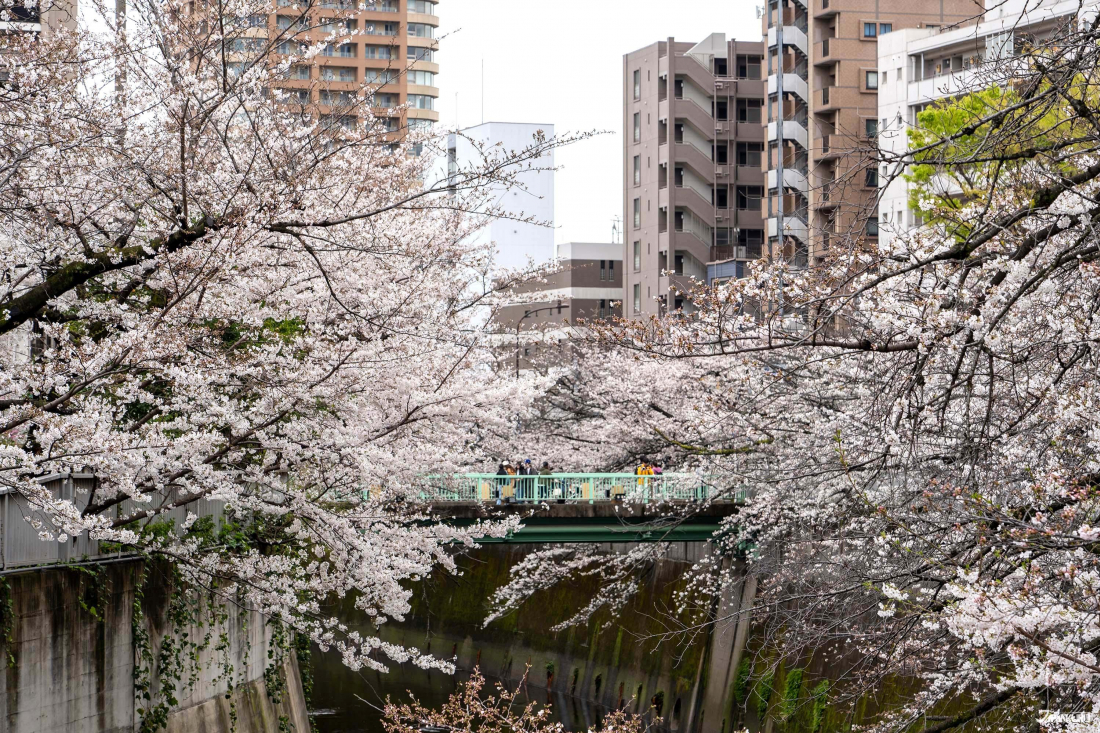
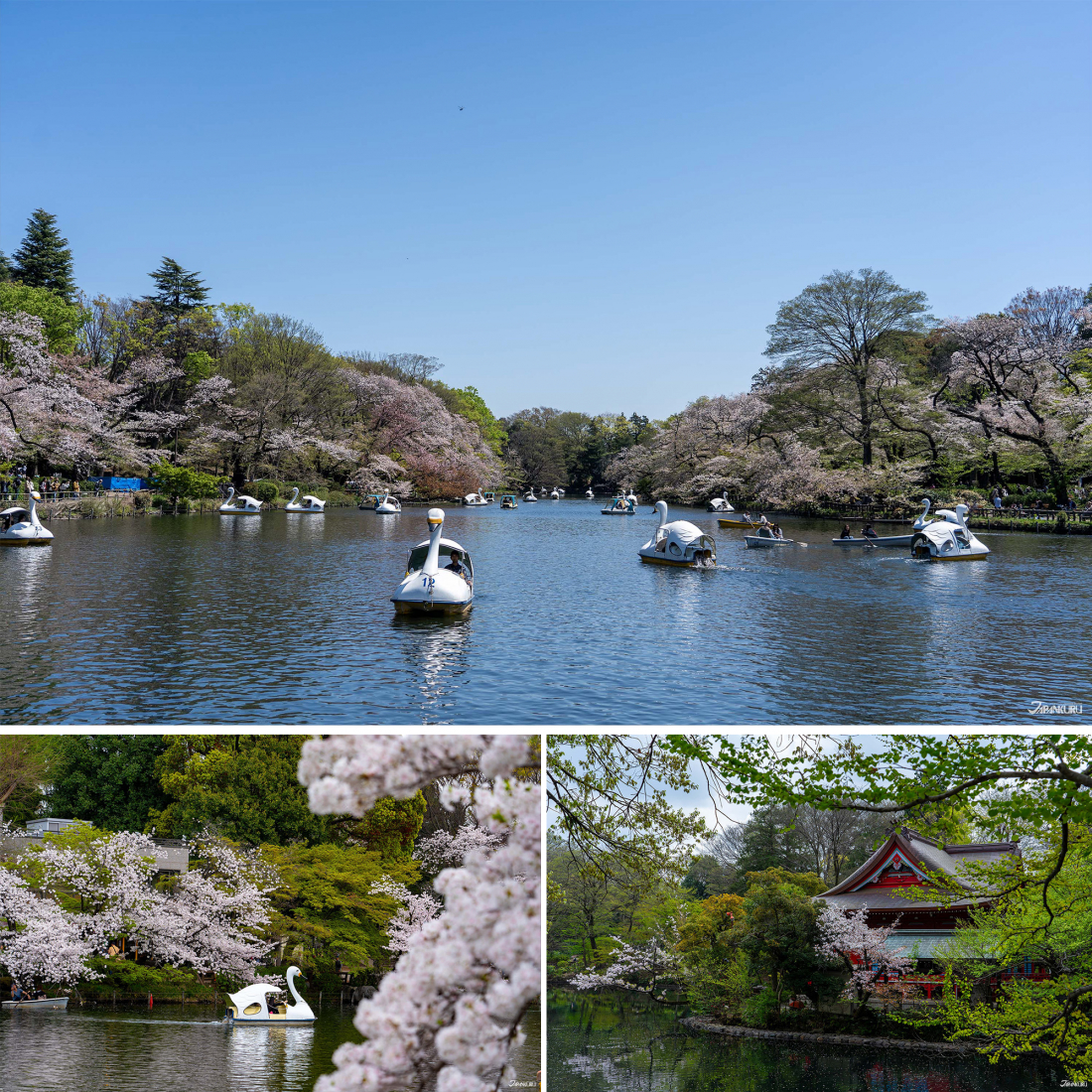

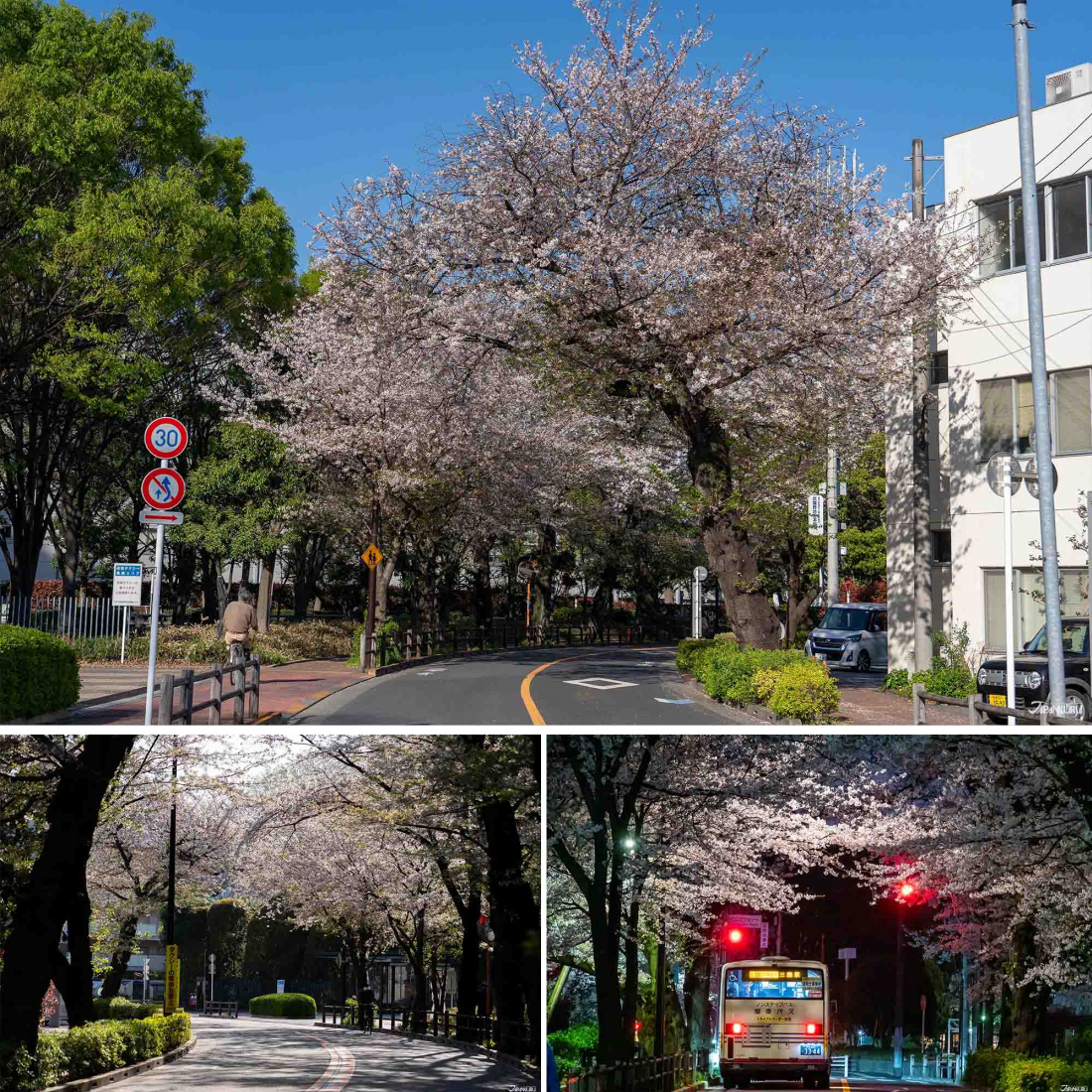
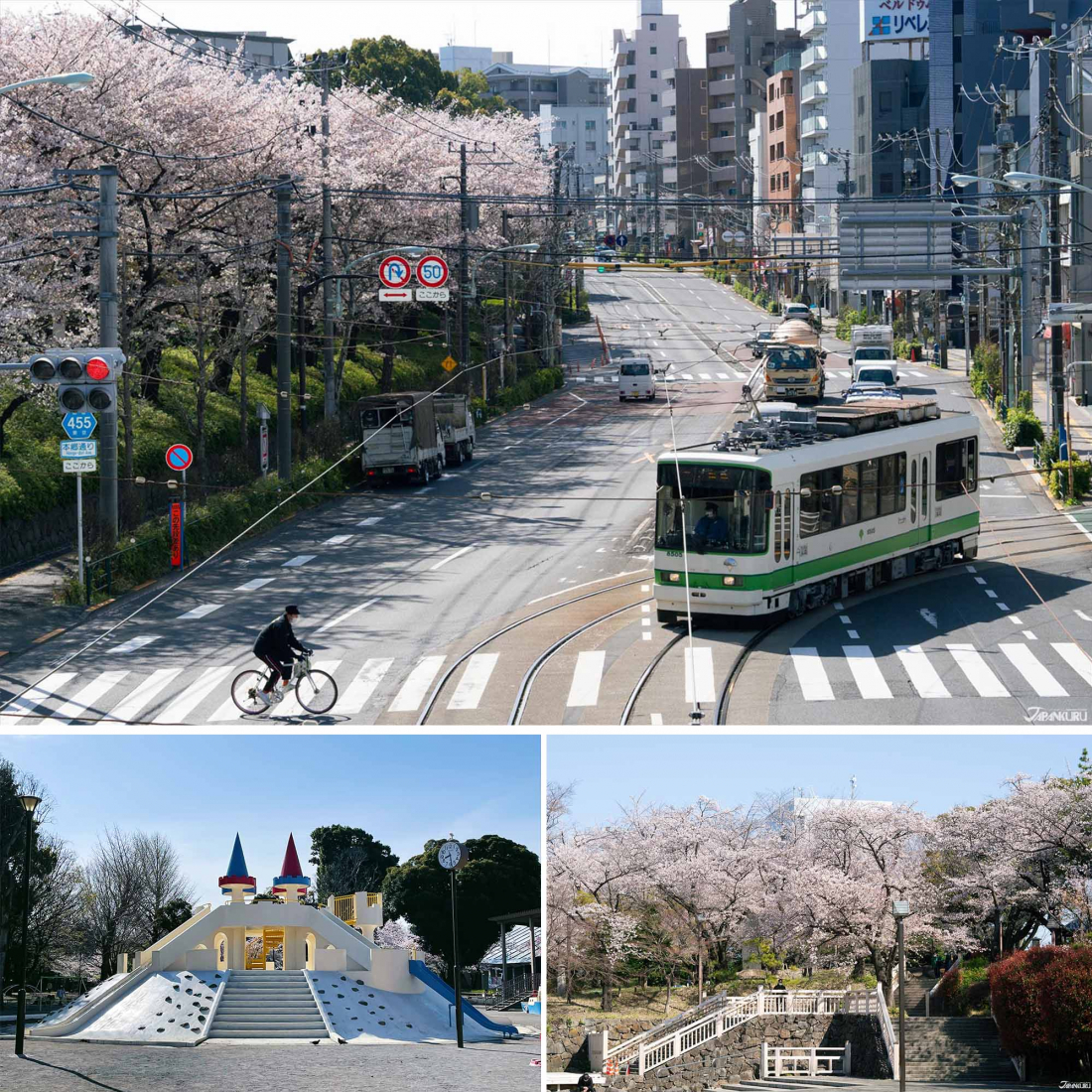
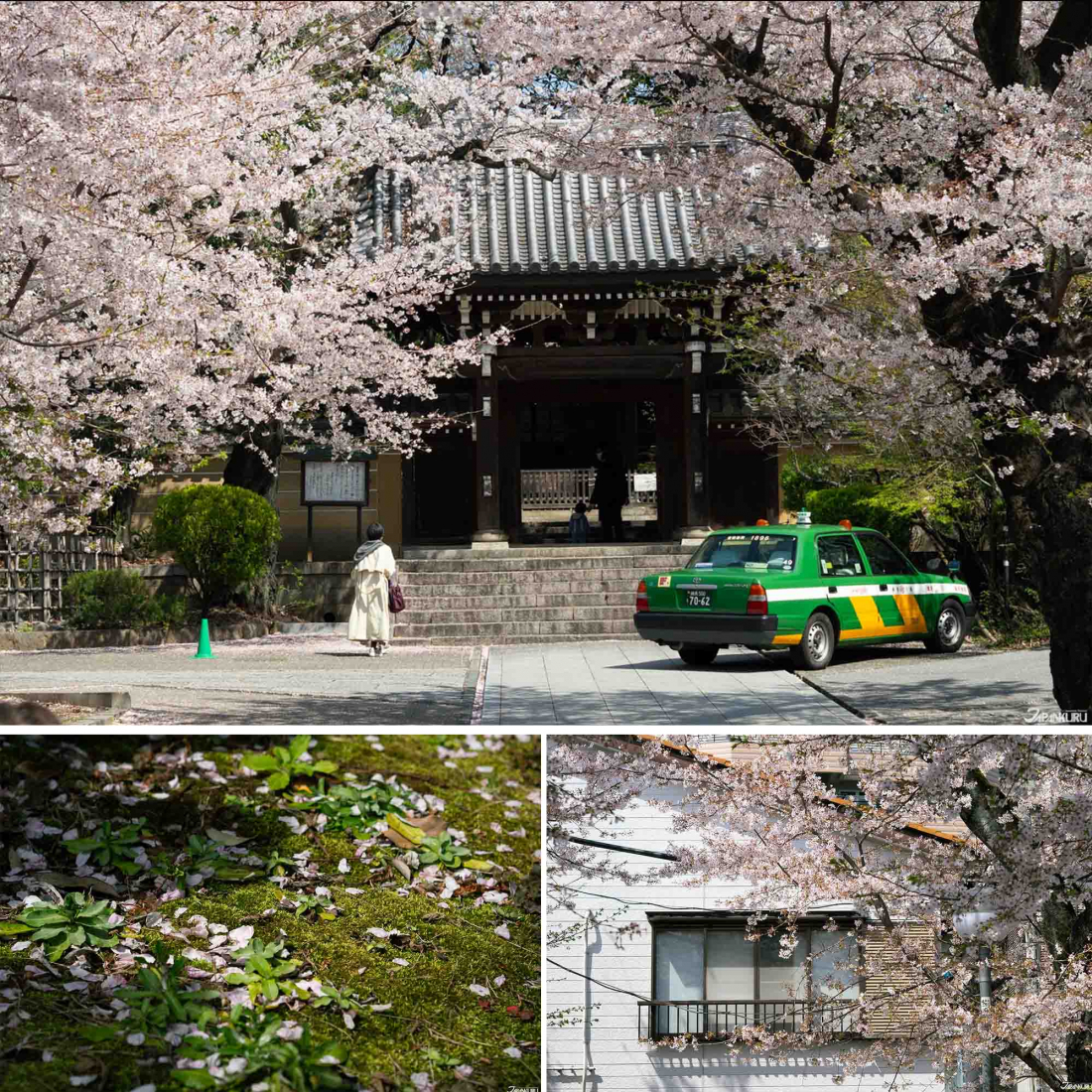
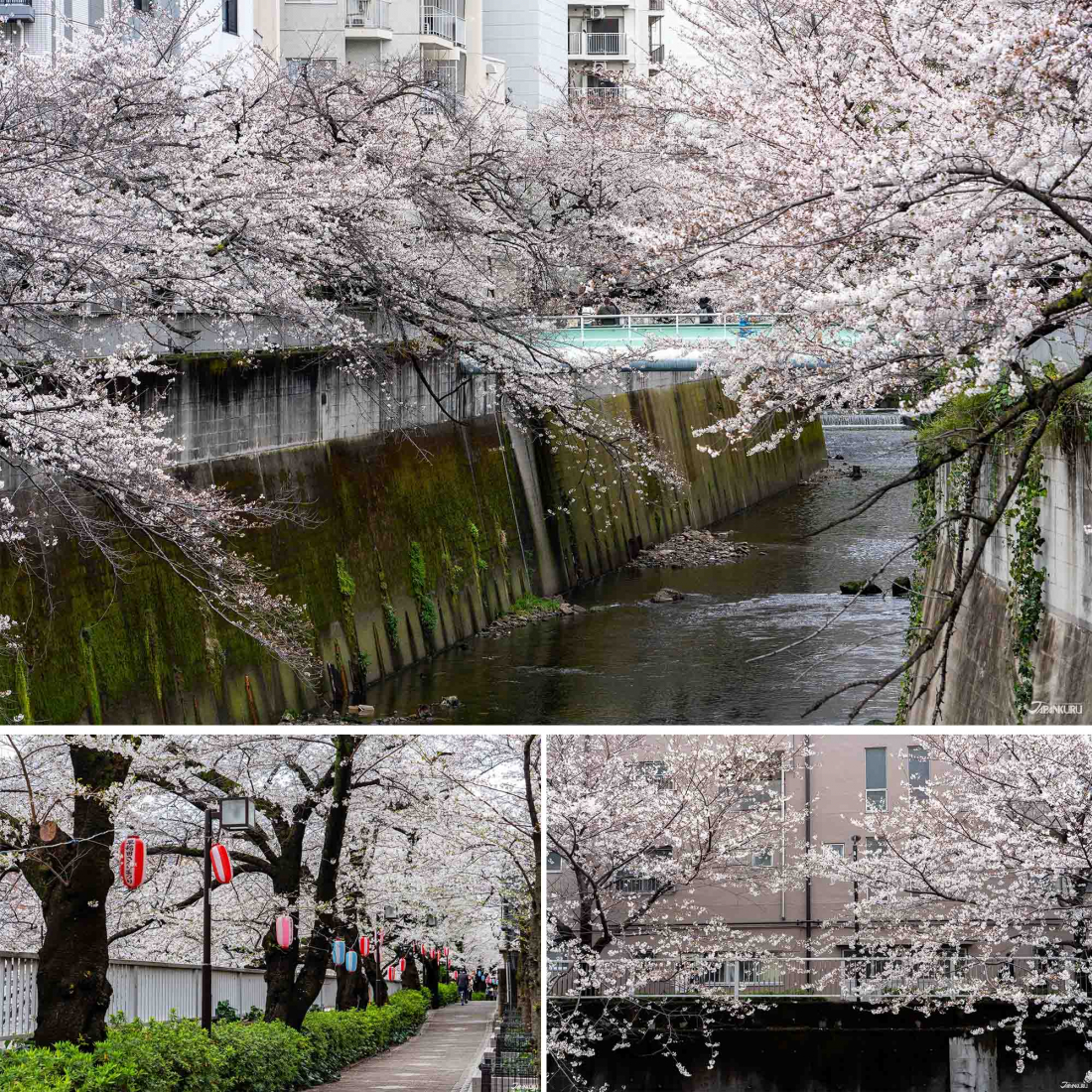
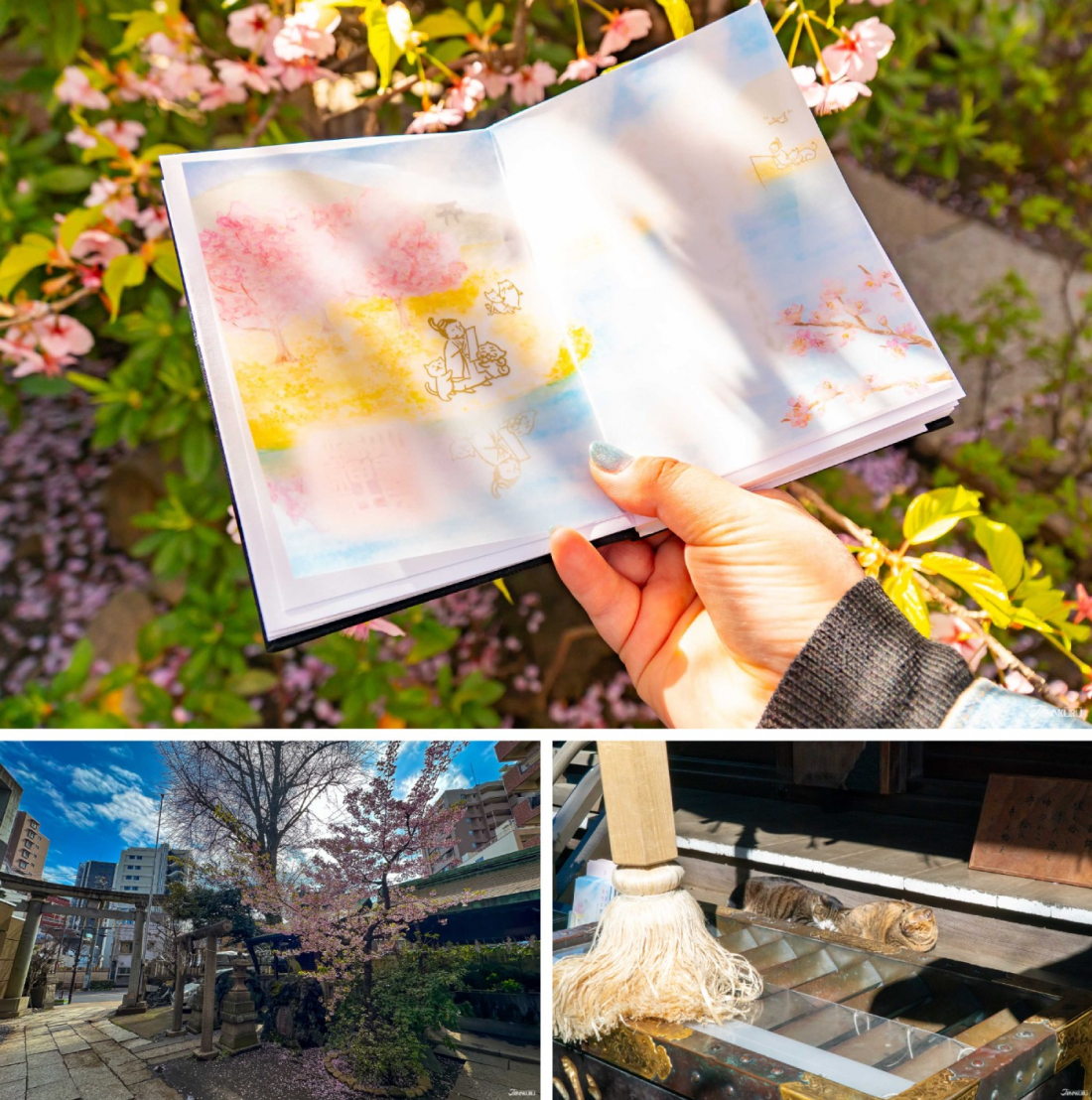
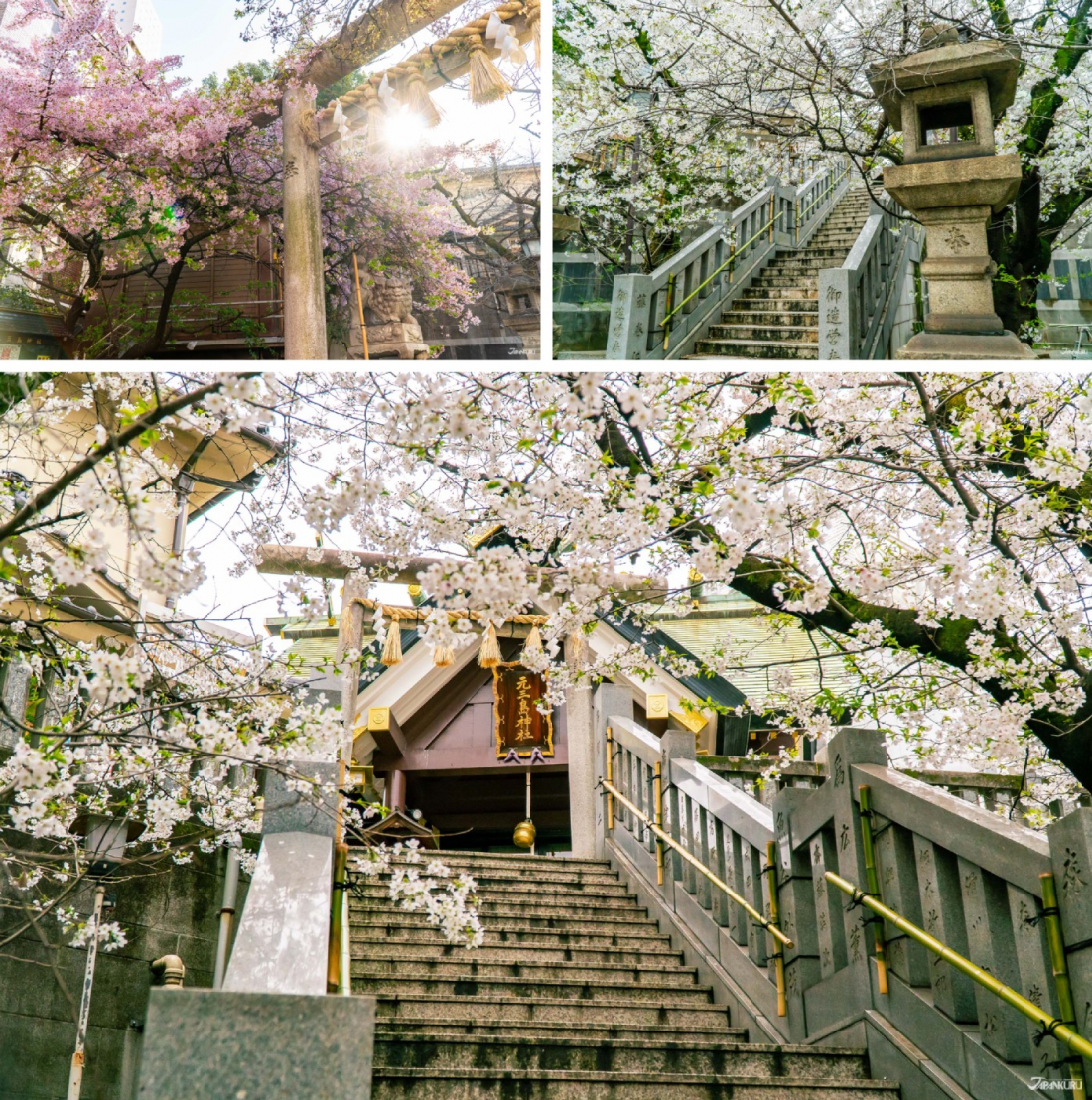

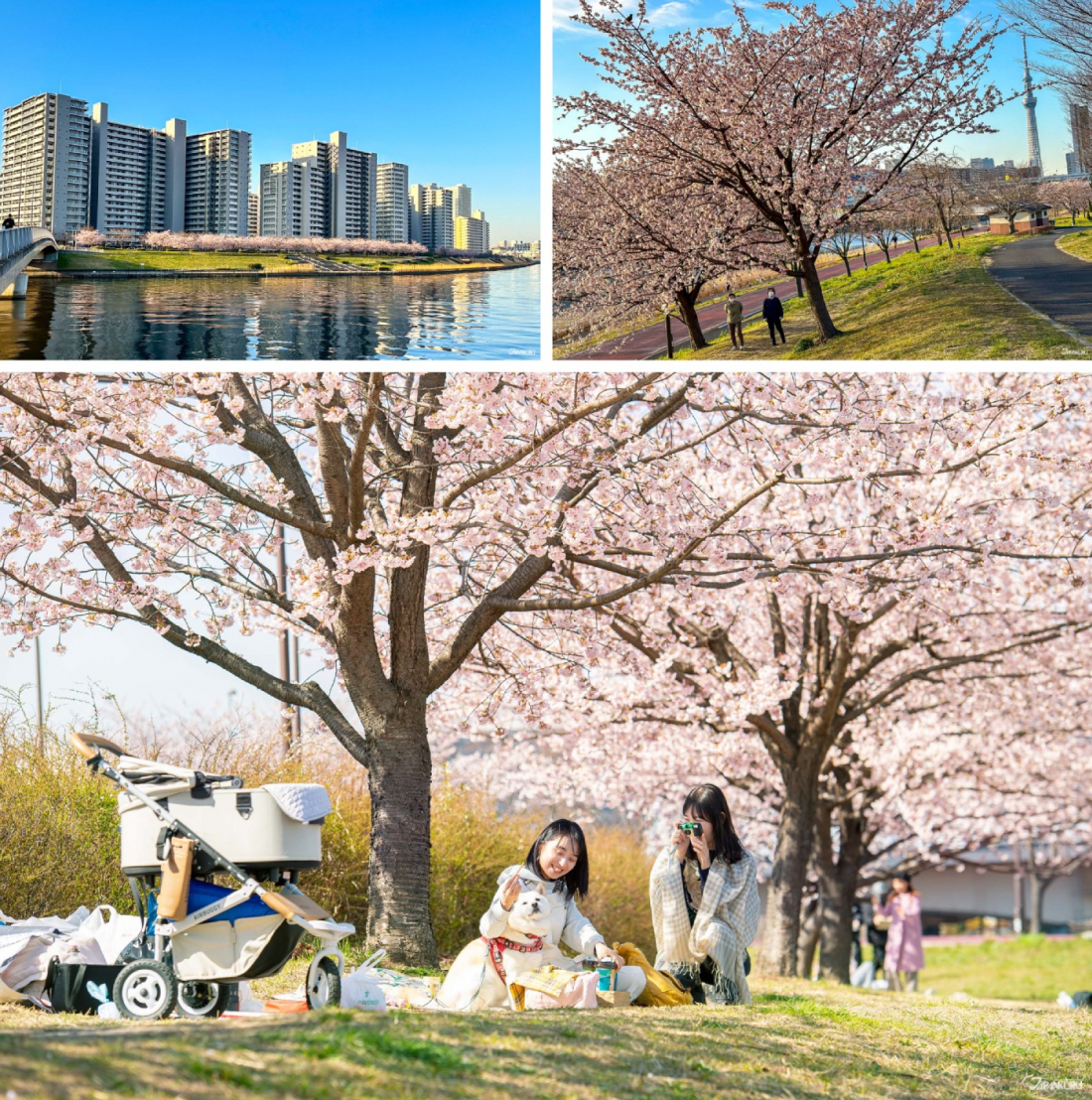
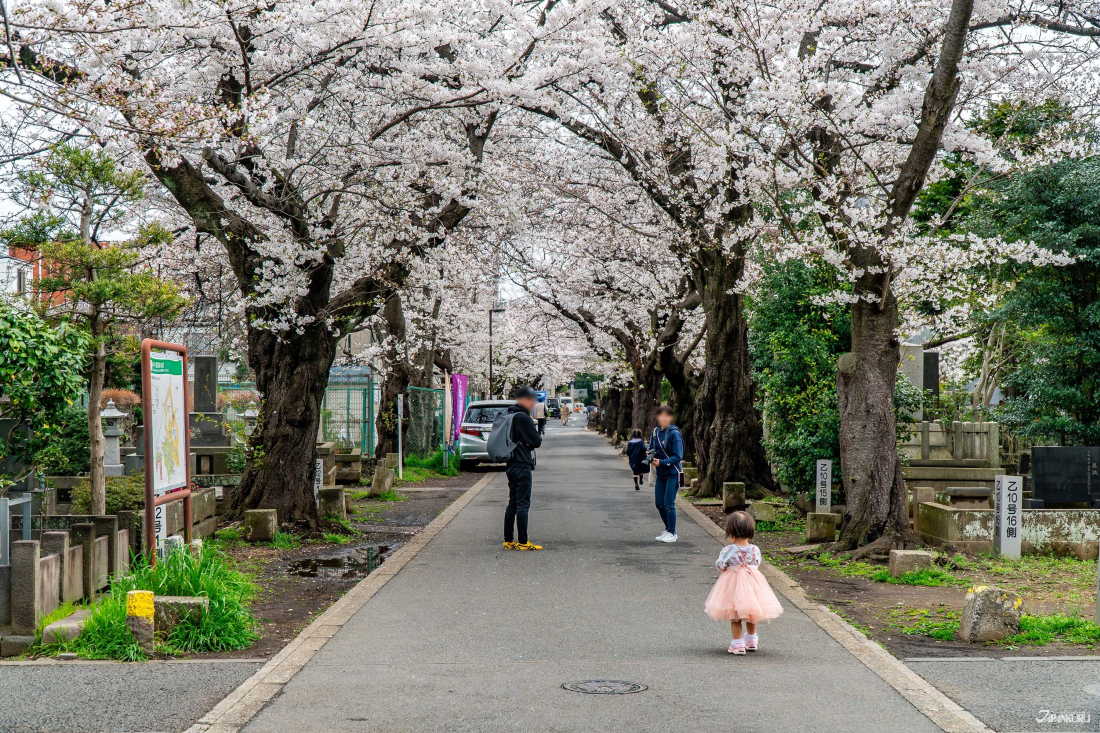










 The Robot Restaurant is gone, but the Samurai Restaurant is here to take its place. Check it out, and don't forget your coupon!
The Robot Restaurant is gone, but the Samurai Restaurant is here to take its place. Check it out, and don't forget your coupon!
 신주쿠의 명소 로봇 레스토랑이 사무라이 레스토랑으로 부활! 절찬 쿠폰 발급중
신주쿠의 명소 로봇 레스토랑이 사무라이 레스토랑으로 부활! 절찬 쿠폰 발급중
 18歲以上才能入場的歌舞秀,和你想的不一樣!拿好優惠券去看看~
#tokyo #shinjuku #samurairestaurant #robotrestaurant #tokyotrip #도쿄여행 #신주쿠 #사무라이레스토랑 #이색체험 #할인이벤트 #歌舞伎町 #東京景點 #武士餐廳 #日本表演 #日本文化體驗 #japankuru #japantrip #japantravel #japanlovers #japan_of_insta
18歲以上才能入場的歌舞秀,和你想的不一樣!拿好優惠券去看看~
#tokyo #shinjuku #samurairestaurant #robotrestaurant #tokyotrip #도쿄여행 #신주쿠 #사무라이레스토랑 #이색체험 #할인이벤트 #歌舞伎町 #東京景點 #武士餐廳 #日本表演 #日本文化體驗 #japankuru #japantrip #japantravel #japanlovers #japan_of_insta
 코지마 x 빅 카메라 쿠폰으로 일본 가전 제품 쇼핑하기
#pr #japankuru #japanshopping #kojima #biccamera #japaneseskincare #yaman #dji #osmopocket3 #skincaredevice #日本購物 #美容儀 #相機 #雅萌 #日本家電 #일본여행 #면세 #여행꿀팁 #일본쇼핑리스트 #쿠폰 #일본쇼핑 #일본브랜드 #할인 #코지마 #빅카메라 #japankurucoupon
코지마 x 빅 카메라 쿠폰으로 일본 가전 제품 쇼핑하기
#pr #japankuru #japanshopping #kojima #biccamera #japaneseskincare #yaman #dji #osmopocket3 #skincaredevice #日本購物 #美容儀 #相機 #雅萌 #日本家電 #일본여행 #면세 #여행꿀팁 #일본쇼핑리스트 #쿠폰 #일본쇼핑 #일본브랜드 #할인 #코지마 #빅카메라 #japankurucoupon
































 Oita Hello Kitty Airport
Oita Hello Kitty Airport  Lands April 13th
Lands April 13th









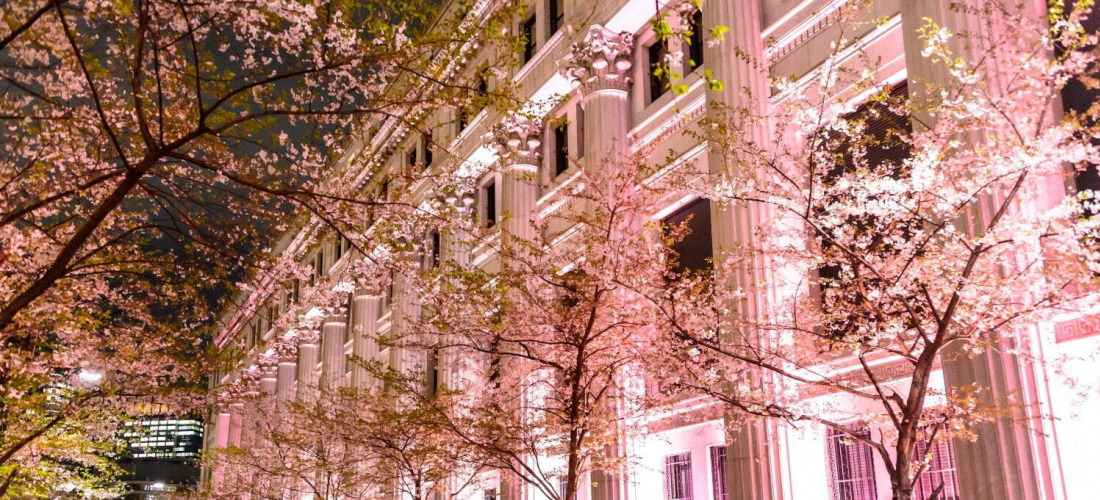
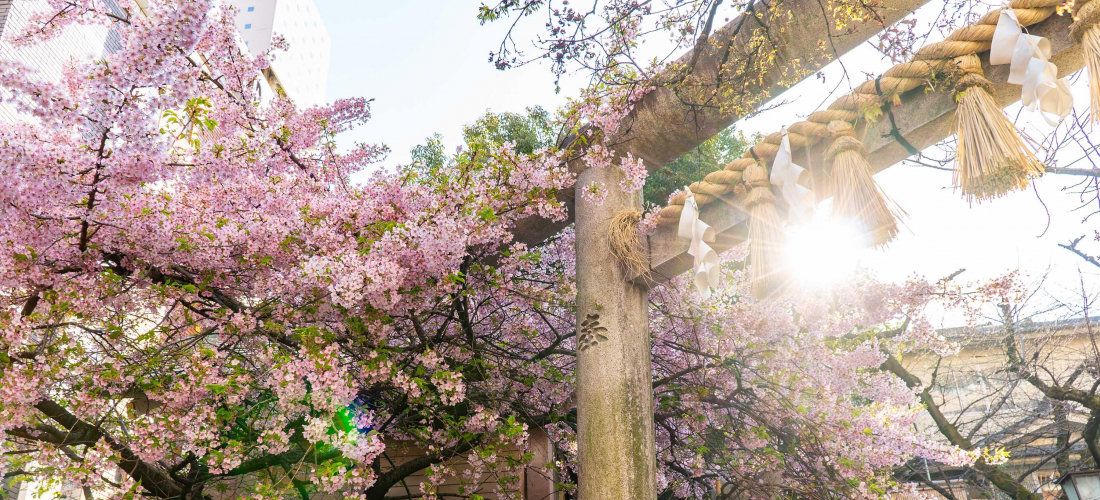
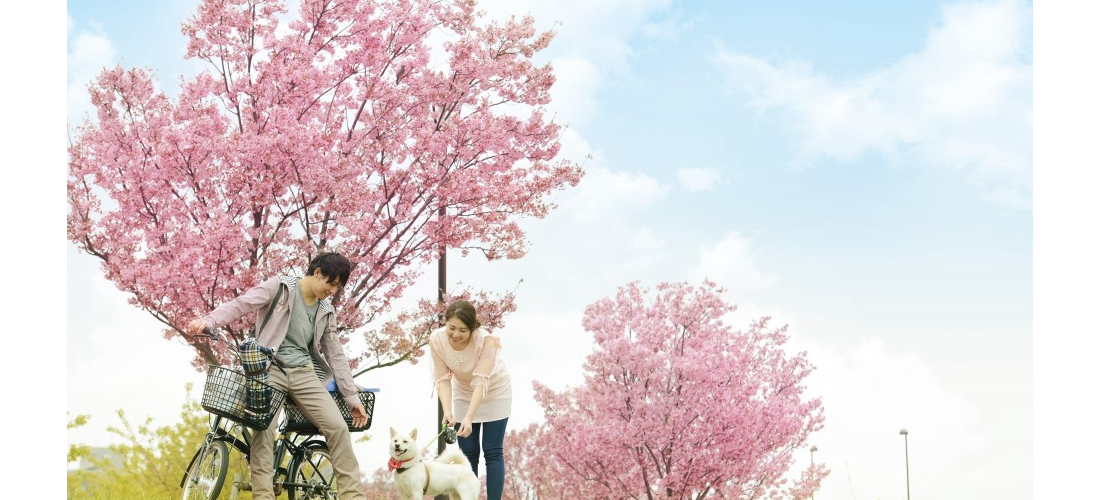











Baby
